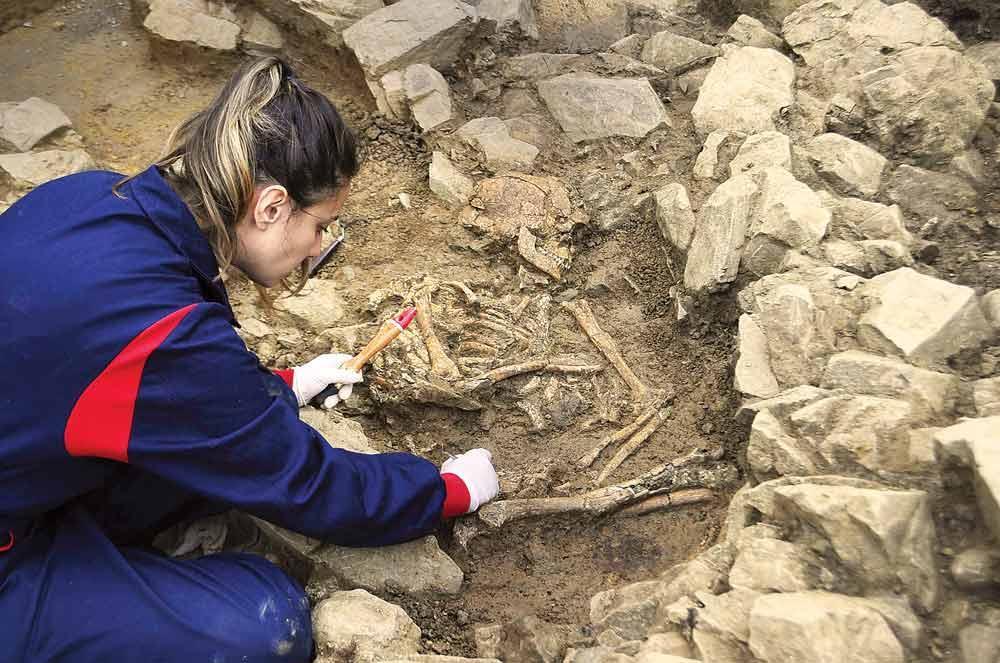Earliest traces of Turks in Anatolia found in Istanbul
ÖMER ERBİL

Findings from a subway construction site right next to the Barbaros Boulevard in Istanbul’s Beşiktaş district have revealed new information that is set to rewrite the history of Istanbul.
Subway excavations continue in a 3,500-year-old graveyard, the oldest one in Istanbul, where 35 graves have been unearthed so far. The discovery of cairn burials that belong to the Northern Black Sea steppe culture - namely earlier Turkish and Altai cultures - is considered an exciting surprise for the scientific world.
The results of the archaeological excavations in Beşiktaş are also set to address some questions about the well-known history of the Battle of Manzikert, which paved the way for Turks to enter Anatolia in 1071. But current findings show that this goes back to the end of the Bronze Age and the beginning of the Iron Age between 1,200 and 1,500 B.C.
Cairn burials
With the special permission of the Culture and Tourism Ministry, we entered the excavation field in Beşiktaş with the Istanbul Archaeology Museums Director Zeynep Kızıltan. Many workers and archaeologists are working in the field.
The excavation field is formed by dozens of round-shape stone masses. Kızıltan said it is the oldest known graveyard in Istanbul.
It is reported that the round-shape stone masses are cairn-type graves, a way old Turkish and Altai cultures buried the dead. Even though archaeologists say it is hard to know the ethnic people who did these burials, scientific sources suggest that Turks maintained their cairn burial methods until the 10th century.
But the result of anthropologists’ analysis on the skeletons in the graves will allow us to learn about the origins of the oldest residents of Istanbul.
Resources on Central Asian and steppe cultures write that the cairn burials, seen in the early Bronze Age (3,000 B.C.), were used by important Turkic tribes such as the Oghuzs, Huns and Göktürks.
Cremations also existed
There are cairn burials in the Balkans too, which indicate there was a migration wave from the steppe cultures during the Bronze Age. The findings in Beşiktaş indicate a relation to that migration wave. People had settled at the edge of the waters running through Istanbul.
The first cairn burial in Istanbul had been unearthed in the Silivri district, on the outskirts of Istanbul, during an excavation by the Istanbul Archelogy Museums. Now the relation between the cairn burial in Silivri and the one found in Beşiktaş will be examined.
So far 35 cairn burials have been unearthed in Beşiktaş. There were cremated bones in some of the burials. The colors of the bones show that they were cremated at temperatures as high as 700-800 degrees.
Among the findings, there were adults buried in the hocker position, as though inside a mother’s womb, in the graves. It is known that both burial types existed in the Northern Black Sea steppe culture.
“We are working on the cairn burial field. There are two types of burial methods here. One is the cremation burials, and the other is the hocker or half-hocker position burials. The number of cremated burials is much higher. After the body is cremated, the remaining bones and ashes are buried and then covered with stones. This type of burial dates back to 1,100-1,200 B.C. But it will become definite as a result of 14 carbon analyses and DNA tests,” Kızıltan said.
















